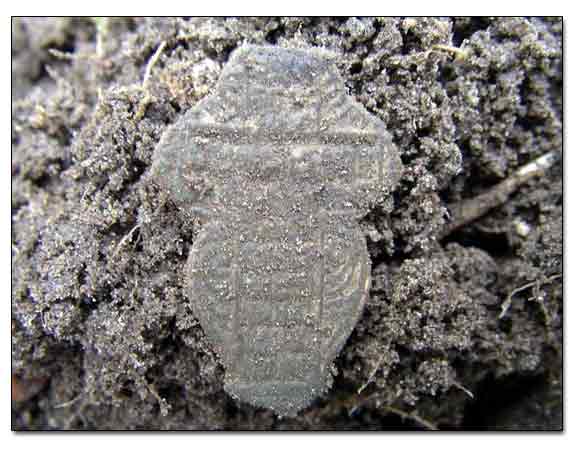Metal Detecting Virgin Site in St. Petersburg Region, page 6
A Search Pattern Should Be Used for Metal Detecting Any Site
It was a huge field and, yes, there was a single tree standing between the field road and the tree line.
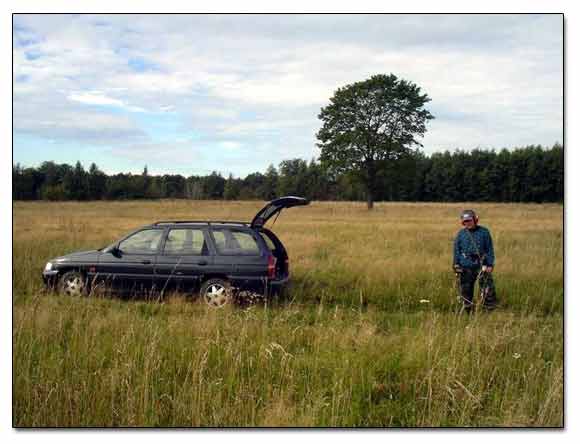
When I approached the tree, I noticed a couple of large stones under the tree roots. That could explain why the tree had grown right in the field: the farmers had never displaced the stones and tractors had gone around them over many years thus allowing the tree to grow up. I investigated the stones and realized that they were not just the large rocks from the field, they were old foundation stones! Too bad the grass in the field had not been mowed this year.
I armed my Explorer with 7-1/4 inch search coil, set up Discrimination on Coins and Jewelry, and began detecting at the spot where the grass was not very tall and thick. Five minutes had not passed, when I received a first coin signal. It turned out to be a 1815 2 Kopecks coin, the most common 19th century Russian coin.
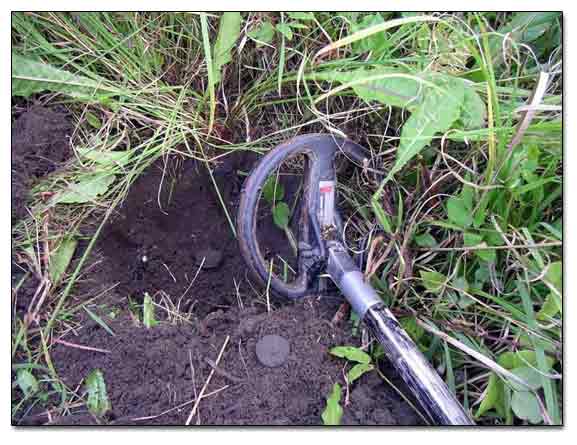
I continued searching a small patch of low grass, got another coin signal, and dug up a 1898 2 Kopecks coin.
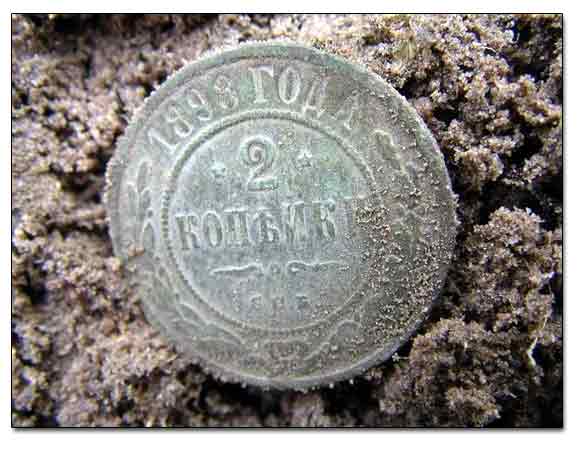
It was getting interesting. Considering the dates of the coins found by Tahhir last year, I knew about the lower time barrier of the site finds, early 18th century. I was wondering about the oldest coin date. Next find was some foreign merchant token.
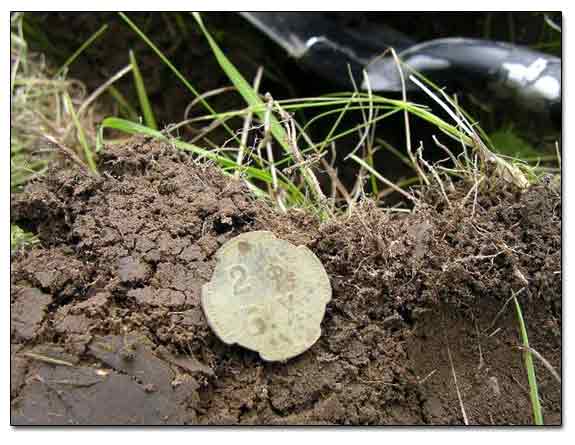
Then a Soviet 1936 3 Kopecks came out.
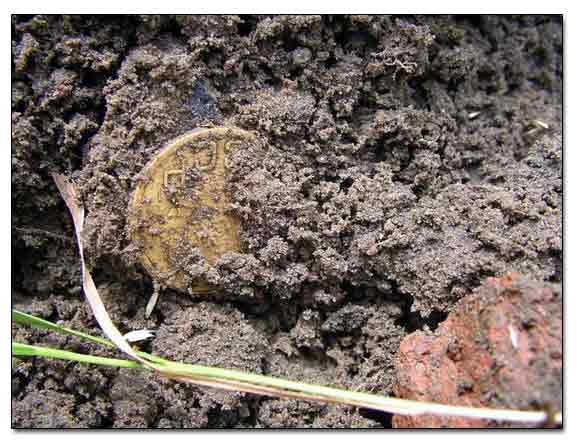
The first finds certainly proved that either a homestead or a tavern stood here for at least 200 years. The site was definitely worth of thorough searching. So I changed the discrimination pattern to Accept Everything But Nails.
10 minutes later, I dug up a low tone target, a small crucifix that used to be worn hanging on a thread or thin chain around the neck.
